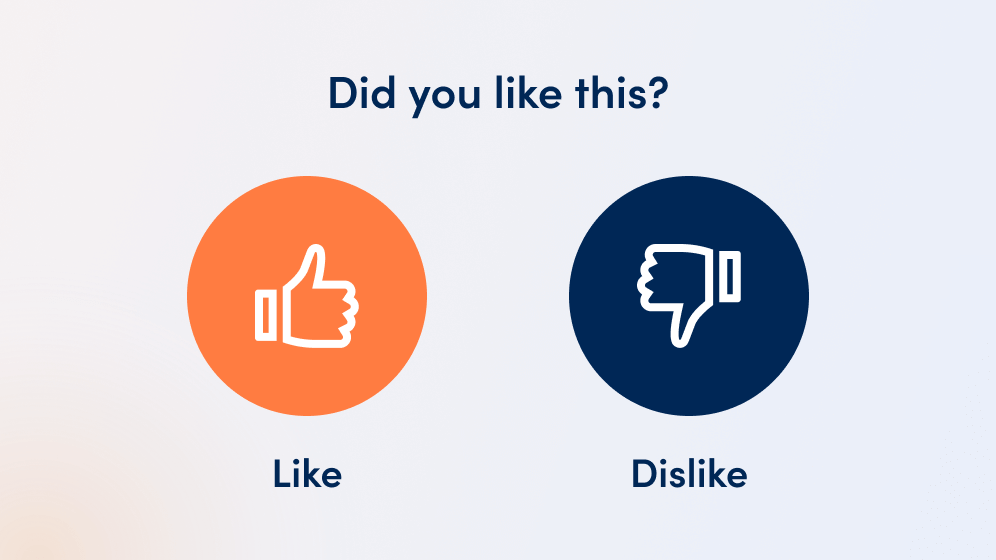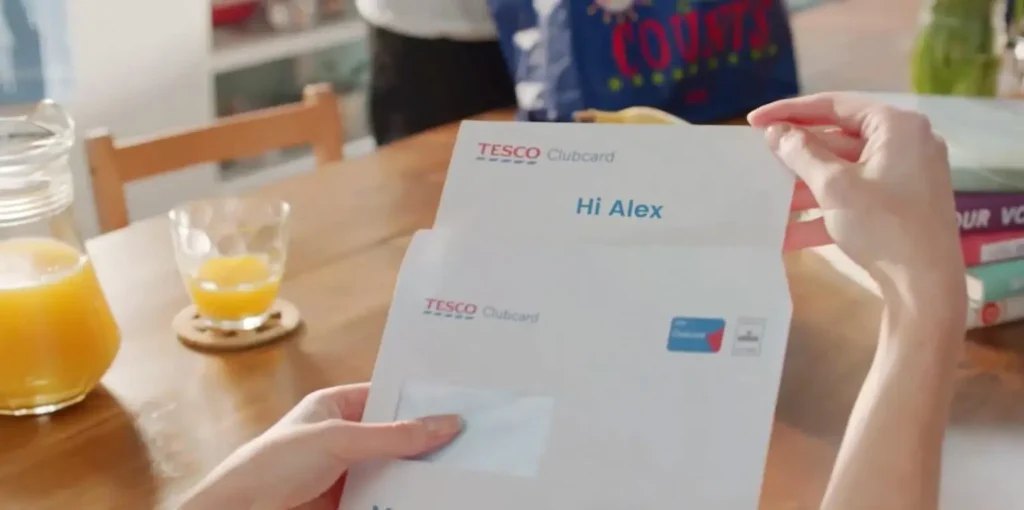In the world of customer-driven marketing, interactive experiences are gaining traction. After all, marketing isn’t really about the brand — it’s about the customer and their needs. Interactivity highlights this, letting current and potential customers guide the digital experience so they get what they want out of it.
And frankly, more often than not, it’s a lot more fun than staring at another ad or tagline telling you to “buy now.”
In this blog, we’ll take a look at what interactive marketing is, its benefits, the tactics that can support it, and how a few brands have implemented it. By the end, you’ll be an expert — or at least savvy enough to wow your boss, client or marketing colleagues.
What Is Interactive Marketing?
We’ve got to start with this essential question: what is interactive marketing?
The Harvard Business Review has a definition of interactive marketing from its earliest days that still rings true today. It’s a little fancier than some of the others you might see (it is Harvard, after all), but it raises some nice points.
The term interactive, as we interpret it, points to two features of communication: the ability to address an individual and the ability to gather and remember the response of that individual. Those two features make possible a third: the ability to address the individual once more in a way that takes into account his or her unique response. Thus we see interactivity as a tool that allows good marketing to become good conversation. The promise of the interactive paradigm, we anticipate, lies in its ability to put a more human face on marketplace exchanges without losing the scale economies of mass marketing.
Did your eyes glaze over at that wall of text? Let’s break down the main components of interactive marketing.
First, it involves two-way communication. It’s not just the brand talking at the customer. It’s a conversation with the customer, meaning they can respond back in a meaningful way. Second, and most importantly I’d argue, you use their responses to further personalize your communication with that individual, and you do that at scale.
Post on
Simply put, interactive marketing is a type of digital marketing that uses interactive elements to engage customers. These elements can be quizzes, calculators, user-generated content, video and more.
OK, next question — why should you care about interactive marketing? What’s the benefit?
If you really didn’t read Harvard’s definition closely, go back and do that now. In my opinion, they answer our next question in one key sentence: “The promise of the interactive paradigm, we anticipate, lies in its ability to put a more human face on marketplace exchanges without losing the scale economies of mass marketing.”
That’s huge! Who wouldn’t be excited to learn that expedient, intuitive online brand interactions can now feel personal and warm and generate loyalty as well? In fact, you really can put a human face on marketplace exchanges. More on that below, but for now let’s bask in the magic of technology. Feels good, doesn’t it?
Now that we’ve squared away what interactive content marketing is and why it’s so important, let’s talk about how you can become an expert in your response-based marketing efforts.
Interactive Marketing Tactics
The kind of interactive marketing tools and tactics you use will depend on your industry, target audience and goals, but there are a few tried and tested strategies.
These are some of the most popular kinds of interactive content marketing.
Polls and Surveys
A poll tends to be a single question with a clear-cut answer. The results tend to look good in a pie chart.
For example: Do you want to receive more video from brands? 62% of consumers say yes.
We add a simple poll as a final step in several of our Interactive Videos, letting viewers click a thumbs up or thumbs down to let us know if they enjoyed watching.
You’ll see it in one of the videos below. (And while we hope you click yes, share your honest feedback. It’s an important part of making the most of the voice of the customer, or VoC, which we’ll discuss more below.)
Surveys are similar to polls, but they typically ask more than one question, so it’s a bigger time commitment from the user.
Both polls and surveys allow businesses to gather data from customers by asking them to choose from a selection of options or answer predefined questions.
Calculators
These interactive tools let users input data and receive a result based on that data. Calculators can be used for a variety of purposes, such as helping customers determine how much of a product they need or how much they could save by using a particular service.
They’re especially helpful with supporting transparency in financial services. You can let customers calculate their own quotes or loan estimates so they can make the best decision for their budget or financial needs. It’s also a good tool for lead generation since you can share the calculator on a landing page, for example, and capture names and emails to follow up with later.
The refinancing calculator below is a great interactive marketing example for the mortgage industry.
Viewers can customize the video by clicking the lightning bolt in the player to input their home value, loan amount, credit score and term. When they click the button to update their video, it generates a new video in real time that calculates the monthly payment and the APR and interest rate.
Note: Real-time interactions are a key part of interactive marketing. When a user engages with your content, the response or expected change should be instant.
Quizzes
Similar to polls and surveys, this interactive marketing tool involves asking the customer questions, but unlike a survey or poll, you’re not asking a question to find out their answer. You’re using their answers to tell them something about themselves.
It’s kind of like a quiz in school that lets you know how well you’ve grasped the subject, except more fun. Millennials who fondly remember BuzzFeed (which is apparently still around) will know what I mean.
Interactive Videos
If you’re not leveraging Interactive Video in your marketing strategy, you’re missing out.
First, a definition. Interactive Videos are multimedia content that allows the viewer to interact with the video in some way. That could be clicking links, filling out forms, or answering questions. It could be branching that lets viewers “choose their own adventure” to determine the video’s story. Thanks to the latest advancements in technology, it can also be a lot more.
This interactivity helps engage the viewer and make the viewing experience more enjoyable. When they’re more invested in the content, they stick around longer.
Interactivity stats:
- Interactive Video leads to a 26% higher video completion rate.
- Interactive Video results in 2.5x higher unique views.
There are many ways video can be used for interactive marketing. Use it to promote products and let customers design or modify what they want to buy. Try tutorials or demos that help customers understand how they’ll use your product or service. It can also be used to create educational content, such as webinars or e-learning courses, which add value for your customer and can help educate them on the need for your service. After all, you can’t sell something like SEO support to a company that doesn’t know that search rankings matter.
It’s easy to see how interactivity upgrades these experiences. Here are some examples.
- Interactive product demonstrations: These videos can let viewers learn more about program or product features and benefits, such as by clicking on different parts of the product.
- Interactive tutorials: These provide step-by-step instructions for completing a task, such as setting up a piece of software or assembling a product. Viewers can ask questions, jump ahead to next steps and rewatch on demand when they need a refresher.
- Interactive customer support videos: This isn’t the most obvious one, but imagine how much more helpful self-service could be if it was visual, personalized and interactive. That’s what interactive customer service videos do.
- Interactive webinars: Webinars are a lot more interesting when you can ask questions in real time and interact with other attendees through a chat or Q&A feature.
- Interactive highlight reels: Bet you haven’t heard about this one, but personalized year-in-review videos are taking off. Essentially, you create a video showing your customer their highlights of the year (loyalty points earned, biggest wins, service usage, etc.) and let them select what they want included in their video or even modify specific sections.
That last one is exactly what WW did for their member year in review. Watch one example below.
When you’re browsing Interactive Video providers, we recommend looking for one that has interactivity native to the video. That means interactive elements are an integral part of the video, designed in Adobe After Effects like the rest of the video. This creates a high-quality user experience superior to the common solution of adding “hotspot” overlays through the player. (Spoiler: We offer this. With Idomoo, you can design interactive elements with unlimited creativity, adding animation and effects to them just like you would other elements in your video for a true wow effect.)
If you’re looking for more Interactive Video examples, check out our blog on why your business needs Interactive Video content.
User-Generated Content
Ah, UGC. Sure, it’s content created and shared by users — reviews, comments, Instagram photos and the like — and companies are particularly fond of it when it promotes their brand. But it also can be part of your interactive marketing strategy. If the brand initiates the user-generated content by incentivizing it or prompting it with an idea, that’s interactive marketing.
This type of content can be an effective type of interactive marketing because it lets customers actively engage with the brand and share their experiences with others. And as they share content, they’re broadening your brand reach. This is powerful stuff because UGC impacts buying behavior, influencing purchase decisions for nearly 80% of people.
The video above is actually an example of user-generated content because each customer, in this case, a WW member, created their own version of the video by selecting what they wanted included. That made each video unique and certainly qualifies as UGC.
How To Get Started With Interactive Marketing: 5 Tips
Getting started with interactive digital marketing is pretty easy, but before you launch your next award-winning interactive marketing campaign, take a look at the 5 tips below.
1. Start Small
Like most new marketing initiatives, it’s OK, even wise, to start small. Roll out one type of interactive content and compare it against a benchmark. What worked? What could be improved? Lessons learned from your first effort will inform future projects.
It doesn’t have to be the fanciest type of interactive content either. A simple poll might be the best place to start. The important part is starting now, not waiting for the perfect strategic timing (which doesn’t exist and will never come).
Once you’re confident you’re getting the ROI you want, expand it to other content types, like video or infographics, and channels, like social media, email marketing or a landing page.
2. Focus on Customer Engagement
The heart of interactive marketing is customer engagement. You want to boost conversion rates, increase satisfaction, support long-term retention, but all of that happens through the medium of customer engagement.
When customers engage with your interactive content, they’re connecting with your brand in a deeper way than when they’re just passive content consumers. That helps build a stronger connection, which in turn builds brand love.
Post on
Think of ways to promote this. Social media platforms like Facebook and Instagram are a great place to start with their live videos, polls, and Q&A sessions. Offering personalized experiences is another way to enhance the digital interface and make it more engaging. By using customer data to tailor content to individuals, businesses help people feel valued as, well, people, not just an account number.
You also want to capture your audience’s attention right from the beginning. You typically only have a few seconds to engage them before they click away. We often suggest greeting them by their first name — it’s a surefire way to catch their ear or eye (or both) — but there are other strategies, too.
Gamification, for example, is a popular hack for increasing user engagement. By incorporating elements of game design into marketing campaigns or the customer experience, you’re building in rewards and challenges that naturally motivate your customers to stay with your content longer.
You also want to make sure it’s clear from the beginning that the content is interactive. Don’t bury the lede, as they say in journalism (i.e., don’t put the main attraction or thing to know further down the content). Your customer might not get that far, and then they’ll miss out.
3. Make Sure You’re Gathering Data
Before creating your interactive marketing content, make sure you have a way to gather data your customer shares with you. That might be explicit data — meaning your customer enters information like answering a survey question. But it might also be data you glean from how they interact with your content.
If users watching a video can skip ahead to different chapters, and you notice 90% of them skip the same chapter, that tells you something about the content included there. If customers can customize their own products in a web tool and they’re all choosing a specific color, maybe you want that as a default option.
If you don’t have a way to capture this data, you’re missing out on half the benefit of interactive marketing.
4. Pay Attention to VoC
The voice of the customer (VoC) underpins any customer-centric CX. But how do you hear that voice? It means paying attention when they talk. Even if talking means a click in your interactive content, you can use this information to capture larger trends and takeaways.
This is similar to the tip above, but it’s not just about data. It’s about understanding what your customer wants. Data should be personal as well as aggregated. If one customer shows interest in a certain service by clicking on a link to learn more about it, you can follow up with them individually with more about that offering.
Surveys, one of the most popular forms of interactive marketing, are a great tool for capturing “voice of customer.” NPS surveys are just the beginning. By getting creative with your surveys, such as adding them to a video, you can draw more meaningful customer feedback, and use that to better tailor their experience going forward.
5. Don’t Stop After the Purchase
As marketers, we can be guilty of pulling out all the stops at the start of the customer journey when we’re wooing prospects to buy, but as soon as they pull out their wallet and sign on the dotted line, we’re off and focused on the next acquisition.
Interactive marketing, remember, is a conversation. That conversation starts before they’re a customer (often) and should continue through onboarding, retention and every phase of the customer journey. You’re in it for the long haul.
Continue to offer the most engaging content to customers who’ve been with you 20 years as you would to the new customer you’re trying to entice. Current customers are worth more, as it happens — it’s one of those customer retention facts your boss wants you to know.
When you’re following up with customers, be timely and share relevant content. It should relate directly to the interaction they made and offer a solution or benefit. Every time you follow up, it’s an opportunity to deepen the relationship. This is where video stands out because it quite literally lets you put a face to your marketing content.
Imagine if every time someone received interactive marketing content, it was from the same person, a familiar face who’s talking to them about items they’ve been browsing, things other customers have found helpful and more. Videos can be personalized to leverage customer data like name, location and interests and interactive to let customers further customize their experience.
We love the BT video above for this reason. It lets new customers meet real people who can explain their first bill and more, making the onboarding experience truly personal.
And here’s a final tip, that I won’t even number, because it goes without saying — or maybe it doesn’t because I’m saying it: always optimize. You have to measure the effectiveness of your interactive marketing campaigns as discussed above to know how to improve it, but you should always be optimizing your efforts to improve future campaigns. Make small adjustments or try clean A/B tests so you can get the most out of your marketing spend, both time and money.
Now That You’re an Interactive Digital Marketing Pro
Let’s recap. When leveraged strategically, interactive marketing helps you increase customer engagement, gather data so you can personalize their experience and helps you harness the voice of the customer for a better CX. Start small, measure the results, and listen to what your customers tell you, even when they don’t say it in so many words.
We help businesses of all kinds upgrade their interactive marketing with video. Financial brands have been among the quickest to adopt Interactive Video, but it’s been used across industries: retail, travel, healthcare, higher ed and more.
Get in touch, and we’ll show you how video interactivity can improve your digital communications while staying personalized, automated and scalable. It just takes 15 minutes.







